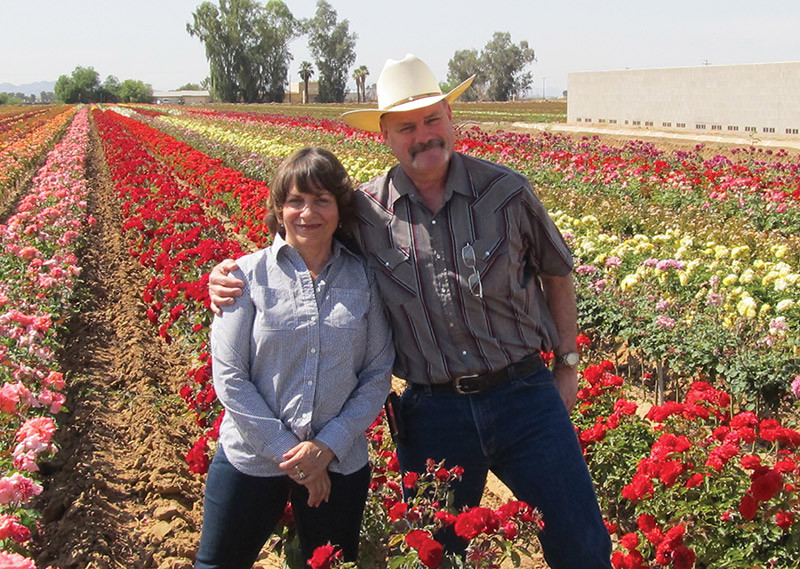
Crossroads: The Challenges of Globalization
Doing business in agriculture used to be more independent with less regulations. Farmers would help one another, have each others backs. These days the regulations, or at least inputs that lead to a successful business, are very complex and ever changing. Since we’ve gone to a global economy, our processes, cost of goods and labor rates, etc., are now at our fingertips. Not that we couldn’t get that information before, it just took a lot longer. This of course depends on how organized you are with tracking this vital information.
We now find ourselves competing with foreign countries on everything from cut flowers to fresh vegetables. These products arrive year-round in many places in the United States, challenging the ability of our consumers to buy local. We have been hearing a lot concerning how to balance the playing field with the current trade barriers and seeing how it all turns out will be interesting.
In the meantime, we face competition from countries with lower regulations and many times lower production costs — especially in the area of labor. So, just how do we compete? Could it be quality? Delivery of goods? How about unique opportunities such as specialty cut flowers that are not available in the global marketplace? How do we each provide a key difference in our products to support the buy local movement?
Ideas to Consider
Provide a product in a market window that the global market has not found. We visited a farmer in Wisconsin last summer who was producing high quality, organic local lettuce that was not available to the local outlets at that time.
California cut flower producers have specialized in cut flowers and greens that are uniquely suited to the California environment. They cannot actually be produced in a cost-effective way in the typical offshore locations that are the key competitors.
Supply a product in a size or unit that is designed for a specific buyer. Customization is an important factor in many businesses. For instance, we provide 100 percent customized solutions which has competed well even with the availability of free internet answers. Being able to customize means you may be able to retain a current customer who has a new need.
One of the first things that is considered when trying to reduce labor costs is automation. In some cases, this may provide the cutting edge between an offshore supplier and you.
How much does it cost to train new employees? It would be worth investing in the current employees to keep these costs minimal with turnover. It is really tough to solve a problem with a labor force that has little experience. And seeing and solving a problem fast saves big money and allows a business to stay nimble and react to market opportunities.
While you may not be very interested in the worldwide business system, it will pay if you can access the information and be ready to act on an opportunity or head off a potential problem. It also pays to listen to what other countries have to say and even visit them. If you are trying to sell outside the United States, this is a critical step. It also might give you an idea of a new product to introduce. Listen to your customers wherever they are. Keep an open mind in starting a strategic partnership.
Keeping Plants Healthy
Finally, Ann wants to scare you into paying attention to how fast we move diseases and insects around the world. The newest and most serious problems that cost huge amounts are often brought in from offshore. Sometimes by an unwitting plant collector, sometimes on packing materials and sometimes on “healthy” looking cuttings. If you do not know what might happen, you cannot prevent it.
Solving an outbreak is always costlier than preventing it and this goes back to training your employees. If they know what types of things to screen for (visually) they can be your first defense. Training is crucial in both countries (or even two locations of the same operation) if you start a strategic partnership and are sending plant material back and forth. In addition, make sure someone in your business (or your consultant — university or private) must be on the lookout for reports on the internet.
In the last five to 10 years we have seen some serious outbreaks of things like viruses and bacteria in our propagation material. We have also seen new insect pests like Asian long- horned beetle and Emerald ash borer. While bringing offshore problems into the continental United States is not unique to the current times, we have certainly increased the frequency and speed of worldwide spread. Even with the inspection service APHIS provides, we cannot relax and believe all is well if they don’t find something. They are understaffed and poorly supported, and the amount they can actually inspect is miniscule. Get your own inspection procedure in place as the ultimate backup.
Whether you are in favor of globalization or not, it is reality. Giving up is not an option.
Chase Agricultural Consulting, LLC was formed at the end of 2011 when Ann (A.R.) Chase and Mike Zemke moved to Arizona. Ann has more than 35 years experience in research, diagnostics and practical consulting in plant pathology. She has been retired from the University of Florida – Mid Florida Research and Education Center in Apopka since 1994, but remains on staff as a Professor Emeritus. Mike holds an Associate of Applied Science in manufacturing drafting. Mike started his education in horticulture when he and Ann were married in 1995. He specializes in communications of all sorts within the industry.









 Video Library
Video Library 


















